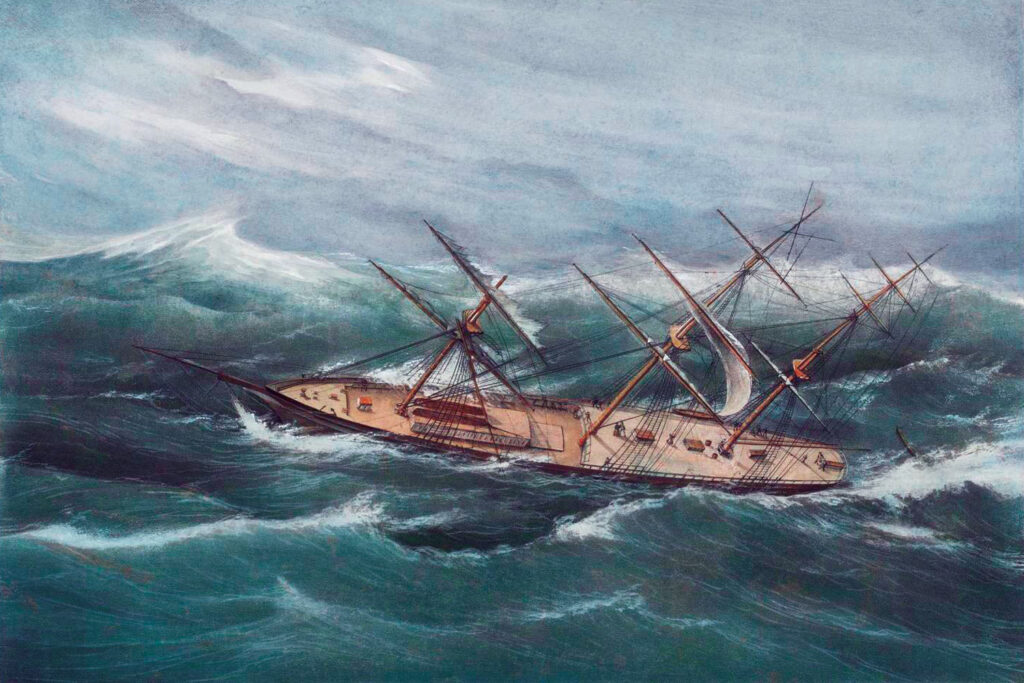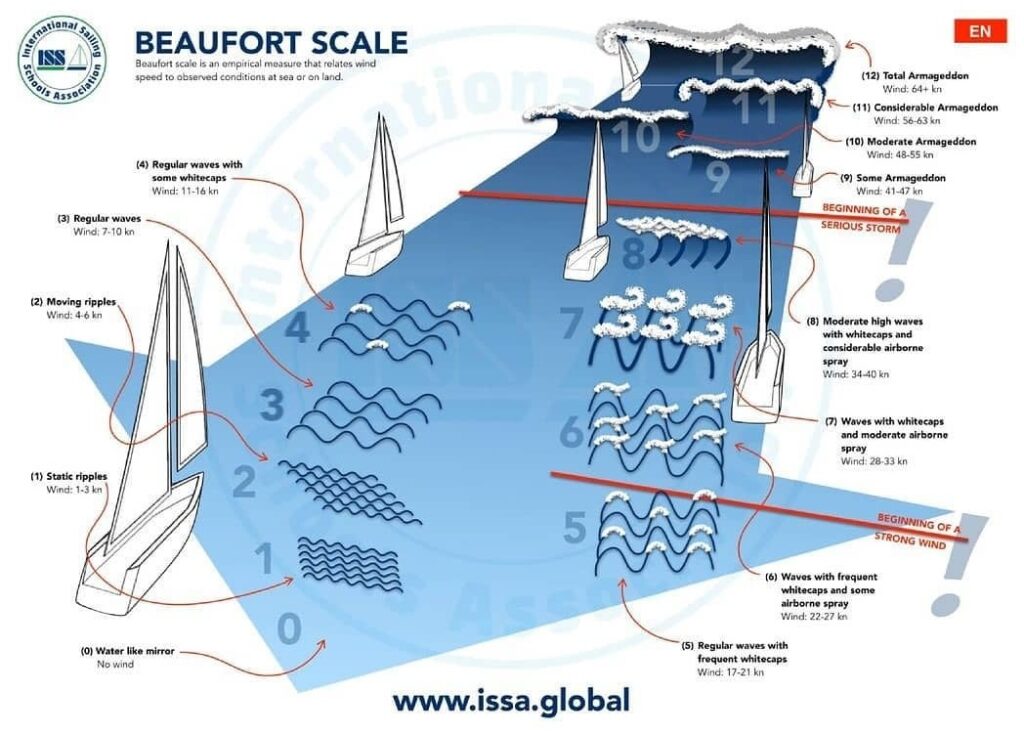How hard is it blowing? I once used the phrase “it’s blowing like snot” in the presence of a Chesapeake sailor, who was horrified. He much preferred “blowing like spit.” Bay area sailors will have heard it said that it was “nuclear” in the slot. But one person’s nuclear is another’s nice breeze. No scientific rigor here.
As a skipper, all you really need to know is whether the boat is overpowered. Yet on tender boats this may happen at 12 knots, while a stiff boat will stand up in 20. Weather researchers need a more objective standard to eliminate subjective impressions.
Anemometers were conceived as early as da Vinci. In 1805, Francis Beaufort of the Royal Navy supervised the adoption of the mariner’s eponymous, commonly used scale of “forces” based on the sails of a British Man Of War. At zero, all sails are up; at six, half have been furled; at force twelve, no canvas sail could withstand the wind. That makes perfect sense, if you happen to sail a square rigger with canvas sails.

I’d like to report that Beaufort’s scale settled the matter, but no. First off, while sailors of the British Commonwealth insist on using it—with some haughtiness, I might say, although it has to be admitted it carries a fine, salty ring—it is less common in the US. Secondly, there is no international agreement on what the top end is; Taiwan and China take it up to 17. Thirdly, the scale refers to descriptions of corresponding sea states that are more relative than we might like. For example, our common summer “small craft advisory” will be issued at force 6-7, which translates to about 22-33 knots. The Beaufort scale calls for seas of 9-19 feet to go with this wind. Anyone ever seen that in the slot? The reason is of course that there are at least two other variables that dictate wave height besides wind velocity, namely, fetch and duration. In our protected Bay, there is never enough fetch and rarely enough time to generate such seas.
I like using the Beaufort scale, because no one knows what it means. “We were seeing Force 5 out there” is more inscrutable than, “it was blowing 18.” But still, my favorites from hallowed nautical literary tradition are “blowing like stink on a skunk,” “blowing great guns and small arms,” and “blowing old boots.”

